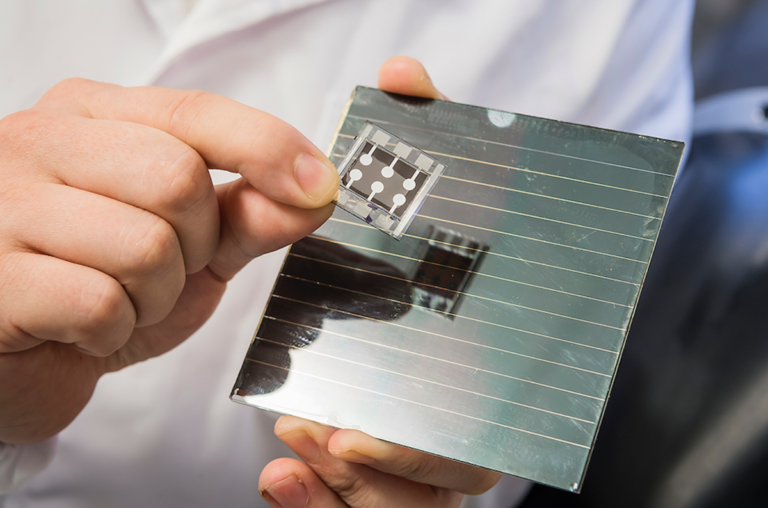Using atomic layer deposition, a research team from the City University of Hong Kong has created an oxygen-poor tin oxide layer to replace the more common fullerene electron transport layer in perovskite solar cells. The result is a device with an efficiency of 25% that can maintain approximately 95% of its efficiency after 2,000 hours.
Researchers from the City University of Hong Kong (CityUHK) have presented a new manufacturing technique for perovskite solar cells.
The team developed two innovations in the structure of perovskite solar cells. The first involved integrating the hole-selective materials and the perovskite layers to simplify the production process.
The second involved replacing traditional organic materials, such as fullerene and bathocuproin (BCP)with tin oxide (SnO₂), an inorganic electron transport layer, in a process known as the atomic layer deposition (ALD) method. The ALD created an oxygen-depleted tin oxide layer, reducing the band shift to a thicker, overgrown layer of normal tin oxide. This was found to significantly improve a device’s operational stability.
The work is presented in the paper “Long-term stability in perovskite solar cells due to deposition of tin oxide in the atomic layer”, available in the magazine Science. The research team says their new manufacturing technique increases the prospects of commercializing perovskite solar cells through improved stability, reliability, efficiency and affordability.
“The device structure reported in this study represents the most simplified architecture in the current field of perovskite solar cells and offers significant advantages for industrialization,” said Gao Danpeng, co-author of the paper. He added that because the solution does not require a traditional organic transfer layer, it reduces material costs in the production process and simplifies production.
The research paper documents how the cell fabricated by the team achieved an energy conversion efficiency of more than 25% after optimizing oxygen vacancy defects in the tin oxide layer. The cell also showed superior stability compared to traditional perovskite solar cells, as it retained more than 95% of its efficiency after 2,000 hours of continuous use under stringent test conditions.
The researchers plan the next phase of their research to focus on applying their new structure to larger perovskite solar panels.
“With the potential to be implemented in solar energy systems within the next five years, this research is a crucial step towards achieving more sustainable and environmentally friendly energy production worldwide,” said Professor Zhu Zonglong from the Department of Chemistry at CityUHK .
The research was carried out in collaboration with teams from the National Renewable Energy Laboratory and Imperial College London.
This content is copyrighted and may not be reused. If you would like to collaborate with us and reuse some of our content, please contact: editors@pv-magazine.com.


